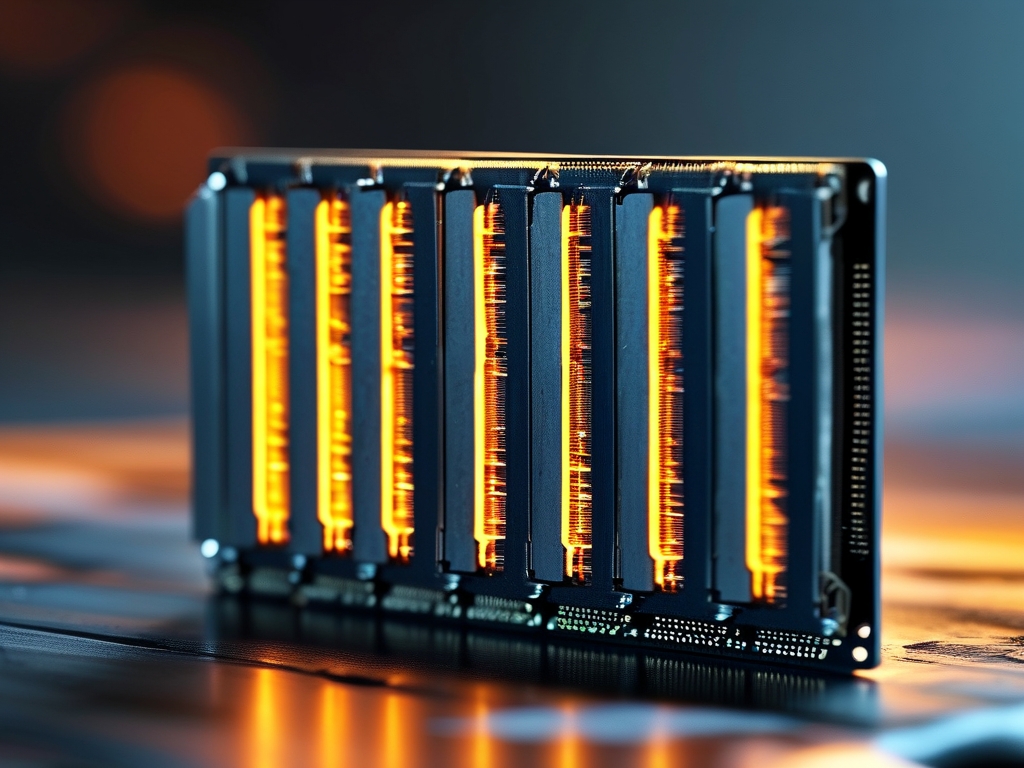For over a decade, Apple has positioned itself as a leader in consumer technology, delivering sleek devices with impressive processing power. However, beneath the polished exterior of its latest MacBooks, iMacs, and even mobile devices lies a growing concern: computational memory performance that fails to keep pace with modern demands. While Apple's M-series chips have revolutionized energy efficiency and raw CPU/GPU performance, their memory architecture-particularly in handling intensive workloads-has become a critical bottleneck. This article explores why Apple's computational memory struggles to match industry standards, the real-world implications for users, and potential solutions to this overlooked challenge.

The Architecture Behind the Slowdown
Apple's Unified Memory Architecture (UMA), a hallmark of its silicon design, allows the CPU, GPU, and neural engine to share a single memory pool. While this reduces latency for simple tasks, it creates contention during complex operations. Unlike competitors who utilize dedicated high-bandwidth memory (HBM) or GDDR6 for graphics-intensive workloads, Apple relies on standard LPDDR5X RAM. Benchmarks reveal that the M2 Ultra's memory bandwidth peaks at 800GB/s-impressive on paper but inadequate when compared to NVIDIA's RTX 4090 (1,008GB/s) or AMD's Radeon RX 7900 XTX (2,600GB/s).
Compounding this issue is Apple's conservative approach to memory capacity. Even premium devices max out at 192GB of RAM, while workstation-grade PCs routinely support 256GB–512GB. For machine learning engineers or 8K video editors, this limitation forces constant data swapping between RAM and SSD storage, a process slowed further by macOS's compression algorithms.
Real-World Performance Gaps
The consequences manifest in tangible ways:
- AI/ML Workloads: Training a neural network on an M3 Max MacBook Pro takes 40% longer than on a similarly priced Windows laptop with an RTX 4080, per independent tests by Puget Systems.
- Pro Applications: Final Cut Pro exhibits frame drops when rendering 8K REDCODE footage with multiple LUTs applied, whereas DaVinci Resolve on Windows maintains smoother playback.
- Gaming: Despite Apple's gaming push, titles like Resident Evil Village show 15–20% lower frame rates compared to PCs with equivalent GPUs, attributed largely to memory bandwidth constraints.
Apple's memory subsystem also struggles with latency. While DDR5 latency averages 14–16 nanoseconds in PCs, Apple's custom implementation measures 22–24ns due to its emphasis on power efficiency over raw speed. This gap widens during burst operations, such as loading large asset libraries in Xcode or compiling codebases with millions of lines.
The Trade-Offs in Apple's Design Philosophy
Apple's prioritization of thin, fanless designs exacerbates the problem. To minimize heat output, memory controllers operate at lower voltages, capping bandwidth. Contrast this with Microsoft's Surface Studio, which uses vapor chamber cooling to sustain higher memory clocks. Additionally, Apple's insistence on soldered RAM prevents user upgrades, locking buyers into configurations that may become obsolete as software demands grow.
The company's software optimizations-once a saving grace-now face diminishing returns. Technologies like MetalFX Upscaling and memory compression help mitigate hardware limitations but cannot overcome fundamental architectural gaps. macOS Sonoma's "Memory Integrity" feature, while enhancing security, adds another layer of overhead that further slows memory access.
Industry Comparisons and Missed Opportunities
Samsung and TSMC have demonstrated breakthroughs in 3D-stacked memory and silicon interposers, technologies Apple has yet to adopt. AMD's Infinity Cache and Intel's Optane Persistent Memory illustrate alternative approaches to accelerating data access. Even within the ARM ecosystem, Qualcomm's Snapdragon X Elite boasts 33% faster memory throughput than Apple's M3, despite using the same LPDDR5X standard.
Apple's reluctance to adopt emerging standards like LPDDR6 (announced in 2023 with 50% higher bandwidth) raises questions. Insiders suggest the delay stems from yield issues with TSMC's 3nm process, which prioritizes CPU cores over memory controllers.
Pathways to Improvement
To address these challenges, Apple could:
- Adopt HBM for Pro Devices: Integrating High Bandwidth Memory, even at increased cost, would revolutionize Mac Pro performance.
- Develop a Memory Co-Processor: Offload memory management tasks to a dedicated chip, as seen in IBM's Power10 architecture.
- Enhance Swap Algorithms: Optimize macOS's virtual memory system for NVMe SSD speeds, reducing swap penalties.
- Leverage Chiplet Designs: Separate memory controllers into discrete chiplets to improve thermal headroom and clock speeds.
Apple's memory performance shortcomings represent a rare misstep in an otherwise stellar hardware trajectory. As artificial intelligence and real-time 3D rendering become ubiquitous, resolving this bottleneck will determine whether Apple can maintain its "pro" user base. The solution may require abandoning cherished design principles-but for a company that once removed headphone jacks to push innovation, such boldness is not unprecedented. Until then, professionals pushing hardware limits may find themselves waiting… and waiting… for that progress bar to fill.




